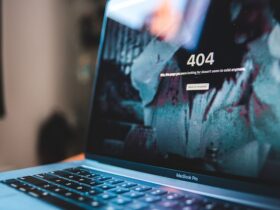Data breaches seem to be everywhere in the news these days. Whether it’s a small business, a large corporation or even government agencies, no one is immune from the threat of data breaches. But what exactly do we mean by “data breach”? In this blog post, we will take a closer look at what data breaches are and explore the different types and causes of them. We’ll also give you tips on how to prevent data breaches and steps to take if you’ve been breached. So let’s get started!
Definition of
A data breach is an incident where sensitive or confidential information is accessed, stolen, viewed or used by unauthorized individuals. This can include personal identifiable information (PII) like names, addresses, social security numbers and credit card details. Data breaches can also occur in organizations with classified and sensitive data such as government agencies.
There are several ways that a data breach can happen. One way is through hacking which involves exploiting vulnerabilities in computer systems to gain access to the target’s network. Other methods include phishing scams that trick users into revealing their login credentials and malware that infects software applications.
Data breaches have become increasingly common in recent years due to the rising amount of digital data being produced every day. Cybercriminals are constantly finding new ways to exploit weaknesses in security systems leaving businesses vulnerable to attacks.
In summary, a data breach occurs when confidential or sensitive information falls into the wrong hands through unauthorized access or theft by cybercriminals.
Different types of data breaches
Data breaches can happen in various forms, and it’s important to understand the different types of data breaches that can occur. One type is a physical breach, where an attacker physically accesses networks or devices to steal sensitive information. For example, someone could steal a laptop or USB drive containing confidential data.
Another type is a network breach, which happens when an attacker gains unauthorized access to a company’s network system by exploiting vulnerabilities in software or hardware. This type of breach can result in massive amounts of sensitive data being leaked.
A third type is malware attacks, where hackers use malicious software like viruses or spyware to infiltrate computer systems and steal valuable information. These attacks are often carried out through email phishing scams or website pop-ups.
There are also internal breaches caused by employees who have access to sensitive information. This could be accidental such as sending an email with confidential attachments but this could also be intentional theft from disgruntled employees for financial gain.
It’s important for individuals and businesses alike to stay vigilant against all these potential types of data breaches and take necessary measures towards prevention.
Causes of data breaches
Data breaches can be caused by a variety of factors, including human error, system malfunctions, and intentional attacks. One major cause of data breaches is phishing, where attackers use fraudulent emails or websites to trick individuals into revealing sensitive information such as passwords.
Another common cause of data breaches is weak passwords. Many people still use simple and easily guessable passwords that make it easy for hackers to gain access to their accounts. In addition, outdated software or unpatched vulnerabilities in systems can also provide an entry point for attackers.
Human error is another potential cause of data breaches. This could include accidentally sending sensitive information to the wrong person or forgetting to secure a device containing confidential data.
Intentional attacks from cyber criminals are becoming increasingly sophisticated and frequent. These may include ransomware attacks where hackers demand payment in exchange for returning control of stolen data.
To prevent these types of causes from leading to a breach, it’s important for organizations to implement strict security protocols such as multi-factor authentication and regular employee training on cybersecurity best practices.
Steps to take if you’ve been breached
If you suspect that your personal or business data has been breached, it’s important to act quickly. Here are some steps you can take to minimize the damage and protect yourself:
1. Stay Calm: It can be stressful to discover a breach, but try not to panic. Keep a clear head so you can focus on taking action.
2. Gather Information: Find out exactly what information was compromised and how it happened. Contact your IT department or consult with a cybersecurity expert for help.
3. Secure Your Accounts: Change all passwords associated with the affected accounts immediately and enable two-factor authentication where possible.
4. Notify Authorities: Report the breach to local law enforcement agencies as well as regulatory bodies if required by law.
5. Notify Affected Parties: Inform anyone who may have been impacted by the breach, including customers or employees whose personal information was exposed.
6. Monitor Your Finances: Keep an eye on your bank statements and credit reports for any suspicious activity.
7. Improve Security Measures: Implement additional security measures such as firewalls, encryption software, and regular backups of data.
Taking these steps will help mitigate further damage from a data breach while also improving overall security practices for future prevention efforts
How to prevent data breaches
Preventing data breaches is essential for protecting sensitive information. Here are some tips to ensure that your personal or business data stays secure.
Firstly, make sure all software and systems are up-to-date with the latest security patches. This includes firewalls, anti-virus software and operating systems. Hackers often exploit vulnerabilities in outdated software to gain access to networks and steal information.
Secondly, limit employee access to data by using role-based permissions. Not every employee needs access to all company information, so restrict access based on job responsibilities. Additionally, regularly review user accounts and revoke unnecessary privileges.
Thirdly, implement strong passwords policies across all systems and applications used within your organization. Consider two-factor authentication as an additional layer of security for accessing sensitive data.
Fourthly, train employees on how to detect phishing scams and avoid social engineering tactics used by hackers trying to trick them into sharing login credentials or other sensitive information.
Conduct regular assessments of your cybersecurity measures to identify any potential weaknesses or gaps in protection before they can be exploited by malicious actors.
Conclusion
In today’s digital age, data breaches are becoming more common and pose a significant threat to individuals and businesses alike. It is essential to understand what data breaches mean, the different types of breaches that can occur, their causes, steps to take if you have been breached, and how to prevent them from happening.
Data breaches can lead to serious consequences such as identity theft or financial loss. Therefore it is crucial always to be vigilant with your personal information. Preventative measures like regularly updating passwords on all accounts and being cautious when sharing sensitive information online can help reduce the risk of a data breach.
While it may not be possible ever to fully eliminate the risk of a data breach occurring, taking precautionary steps and staying informed about potential threats will go a long way in keeping your personal information safe from harm.
Stay informed about emerging trends in cybersecurity practices by visiting reputable websites that report on security news and updates frequently. Always remember that prevention is better than cure; therefore developing good habits now will save you from future problems and losses related to data breach incidents!











FIND US ON SOCIALS